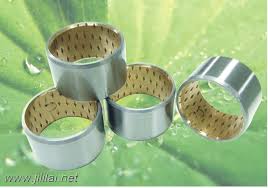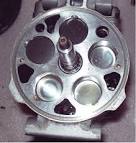
المشاركة الأصلية كتبت بواسطة محمد زكي

السلام عليكم ورحمة الله
- اولا عايز اسلم علي كل الناس الي في المنتدي الجميل ده والي اتشرفت اني ابقي عضو فيه . وكمان عايز اعتذر
. انا اسف اني طولت عليكو بس يارب اكون قدرت افيدكو باي حاجه زي ما المنتدي ده ديما بيفيد الناس كلها .
لو حد محتاج اي حاجه انا تحت امرو . |
i had pride sedan since 2001 and it is model 2001 ,it was automatic too the A/C brand
was daweoo from the orginal production line it is sold since 1 year and half ago


in 2007 after 5years i felt the a/c becomes very weak
and need
overall

i was make this fixing operating in sobhy sanad sons beside hamdy Lada
in the same road
for eL sendbad park
about 500 egyptians pounds this work shop
change
A/C compressor kit repair
and of sure recharge
the
freon gas
and the A/C
becomse very strong
even in very hot climate
then this is only part
you need
i am not trust
in all used parts and not all cars parts can replaced by used one!!!

repair kit

or


 so please take a good care for the bad scammers into egypt
this all story
read it as well
for exampLe
so please take a good care for the bad scammers into egypt
this all story
read it as well
for exampLe
At the time of removal, the compressor:
-was around 10 years old
-the odometer read over 100k miles
-had spent an unknown number of hours idling without accumulating any miles on the odometer
Note: Most of the images on this page can be enlarged by clicking the left mouse button on the appropriate picture in your web browser. If a red X appears instead of an image, clicking the right mouse button in your web browser will reveal a menu with the option to "show picture" which will attempt to reload the selected picture from this server.
Here's the compressor removed from the car.

These were inserted into the suction and discharge plugs to keep debris from falling into the compressor

With the caps removed

The front clutch pulley bearings are toasted and do not operate properly

This compressor had sat unused for over a year in a humidity and temperature controlled garage. If you look closely, you can see a couple spider webs on it.

There was an oil sludge on the front half of the compressor casing, but this had been present for a long time as evidenced by the lack of corrosion under the coating.

And the front part

Here's the swash plate and the pistons.

And from a different angle

Spin the input shaft and the pistons start to move up/down as the shaft rotates.

When actually installed in a car, the input shaft of the compressor is overdriven and spins faster than the engine crankshaft. Take note of how large the diameter of the engine harmonic balancer is in relation to the a/c compressor clutch pulley in your crownvic.

The green colored liquid is refrigerant oil with the factory installed fluorescent green tracer dye in it.

Another reservoir for oil is inside the a/c accumulator/drier.

And the front half of the compressor with the input shaft removed

This felt washer sits in front of the front shaft seal and acts as an oil wick so that oil doesn't spray onto the clutch surfaces.

Another picture of the front half of the compressor housing

The refrigerant oil had a really high surface tension, and also acts like a magnet at attracting any dirt around it.

Here's the electromagnetic coil which would lock the clutch disc with the pulley when the compressor was commanded to be engaged. This part still smells burnt after sitting unused for over a year.

And the back of the coil. This part was removed using a 1 pound hammer again. This is not the proper service technique, but this compressor will never be reinstalled on an actual vehicle again so this is a moot point.

And the front of the compressor housing with coil removed.

The day was a little windy outside, and a peice of plant matter landed inside the housing. If you're servicing a compressor that will actually go back in a car, you probably will want to work indoors to prevent debris and dirt from getting inside your compressor.

And the rear head. The manifold block would normally bolt here.

The black ring is a flexible o-ring which seals the front half of the compressor housing to the rear of the housing.

And starting here, all of the pictures are of parts that have been cleaned/degreased and then re-coated in wd40 to inhibit further corrosion.

The compressor pistons all had numerical markings on them. This one is H 69

This one H 82

This one H68

Take note of the teflon compressor seal rings


And here you can see the spots in the pistons where the ball shoes would go.

And here's one side of the swash plate. You can see in the
